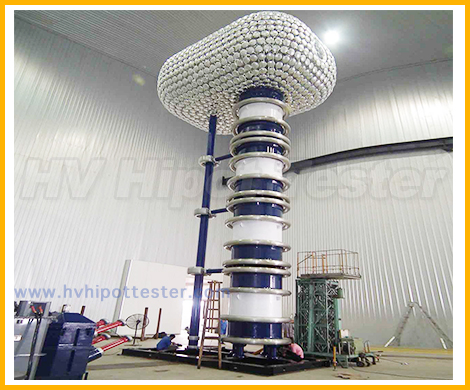

 pm01@hvhipottester.com
pm01@hvhipottester.com  pm02@hvhipottester.com
pm02@hvhipottester.com  8618986157274
8618986157274  +86 18986157274
+86 18986157274  live:1379417129
live:1379417129 1379417129
1379417129
Tech: Steps and Procedures for HIPOT Testing
Only electrically qualified workers may perform this testing.
Open circuit breakers or switches to isolate the circuit or Cable that will be hi-pot tested.
Confirm that all equipment or Cable that is not to be tested is isolated from the circuit under test.
The limited approach boundary for this hi-pot procedure at 1000 volts is 5 ft. (1.53m) so place barriers around the terminations of cables and equipment under test to prevent unqualified persons from crossing this boundary.
Connect the ground lead of the HIPOT Tester to a suitable building ground or grounding electrode conductor. Attach the high voltage lead to one of the isolated circuit phase conductors.
Switch on the HIPOT Tester. Set the meter to 1000 Volts or pre decide DC Voltage. Push the “Test” button on the meter and after one minute observe the resistance reading. Record the reading for reference.
At the end of the one minute test, switch the HIPOT Tester from the high potential test mode to the voltage measuring mode to confirm that the circuit phase conductor and voltage of HIPOT Tester are now reading zero volts.
Repeat this test procedure for all circuit phase conductors testing each phase to ground and each phase to each phase.
When testing is completed disconnect the HIPOT Tester from the circuits under test and confirm that the circuits are clear to be re-connected and re-energized.
To PASS the unit or Cable under Test must be exposed to a minimum Stress of pre decide Voltage for 1 minute without any Indication of Breakdown. For Equipments with total area less than 0.1 m2, the insulation resistance shall not be less than 400 MΩ. For Equipment with total area larger than 0.1 m2 the measured insulation resistance times the area of the module shall not be less than 40 MΩ⋅m2.
During a HIPOT Test, There may be at some risk so to minimize risk of injury from electrical shock make sure HIPOT equipment follows these guidelines:
The total charge you can receive in a shock should not exceed 45 uC.
The total hipot energy should not exceed 350 mJ.
The total current should not exceed 5 mA peak (3.5 mA rms)
The fault current should not stay on longer than 10 mS.
If the tester doesn’t meet these requirements then make sure it has a safety interlock system that guarantees you cannot contact the cable while it is being hipot tested.
For Cable:
Verify the correct operation of the safety circuits in the equipment every time you calibrate it.
Don’t touch the cable during hipot testing.
Allow the hipot testing to complete before removing the cable.
Wear insulating gloves.
Don’t allow children to use the equipment.
If you have any electronic implants then don’t use the equipment.